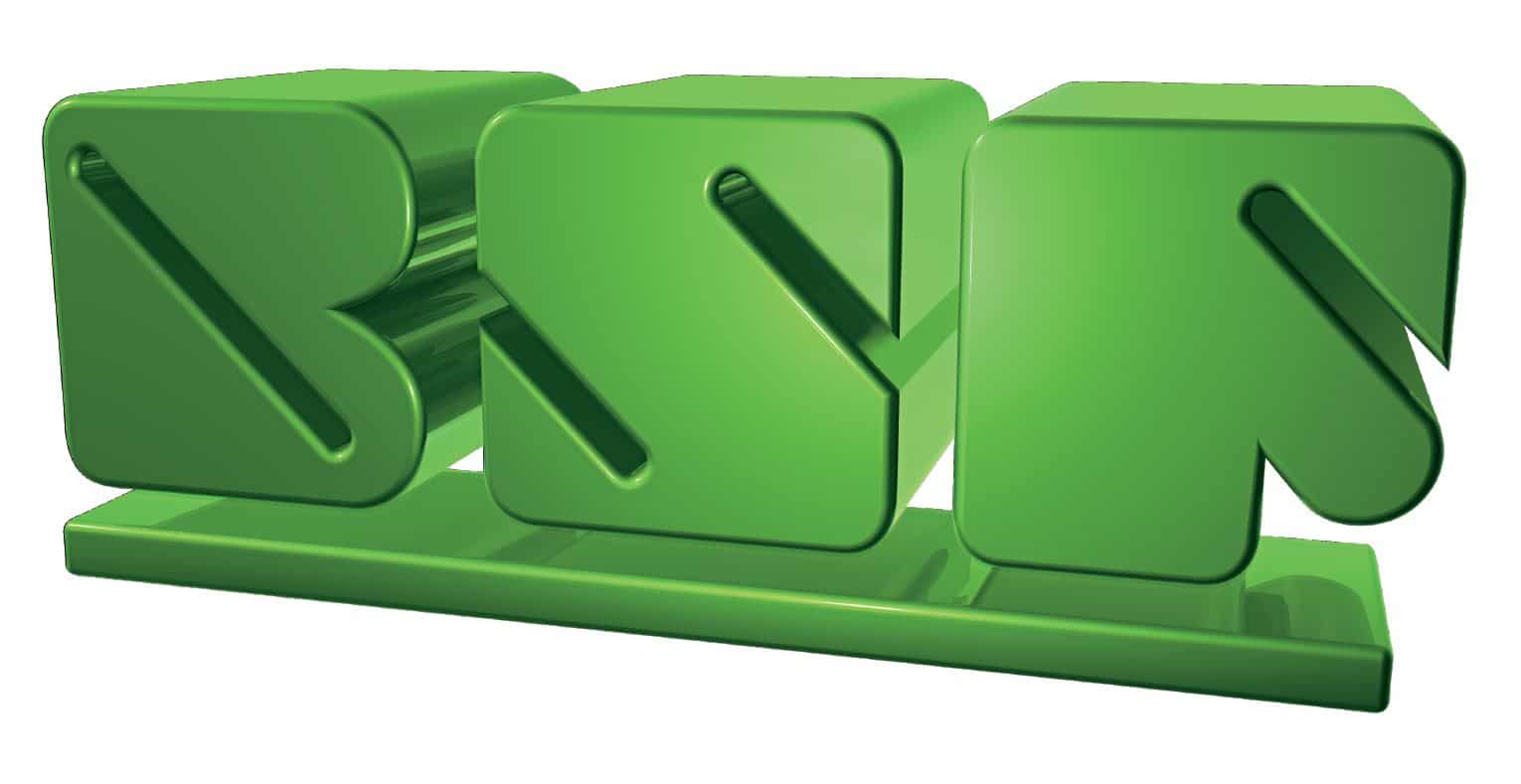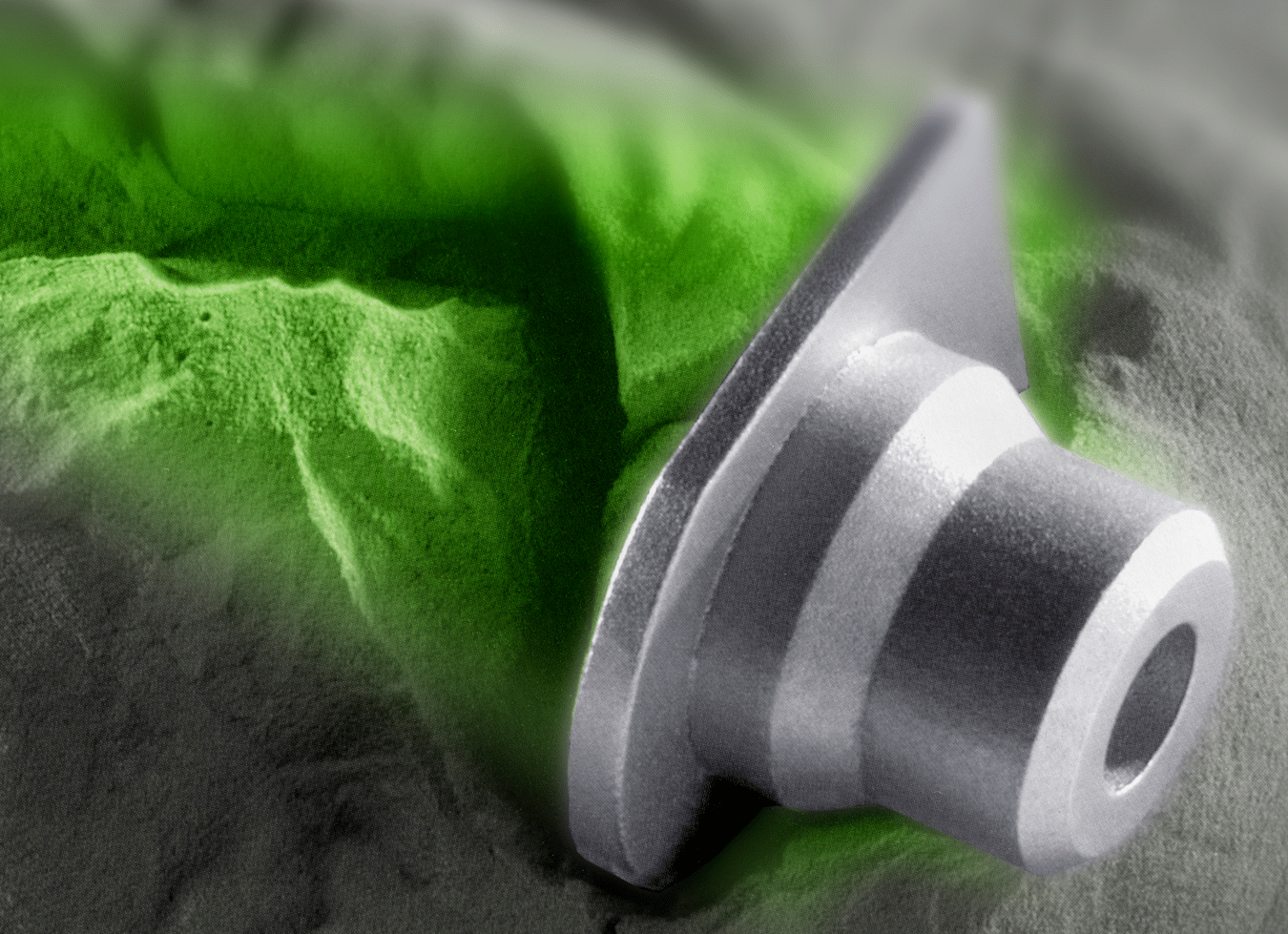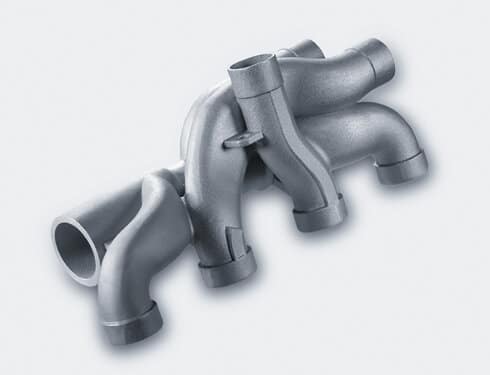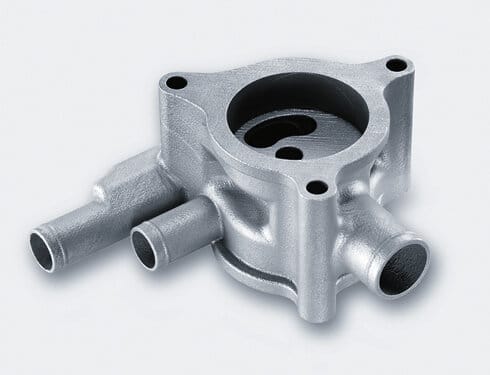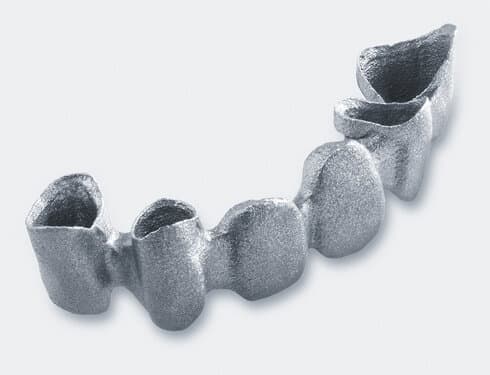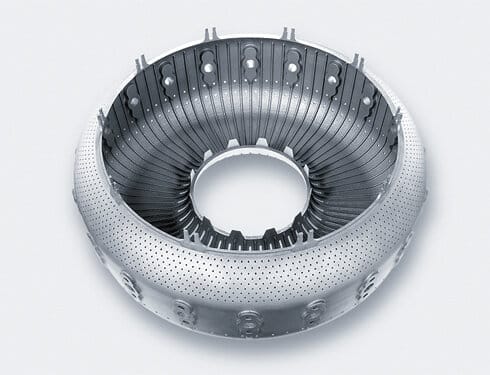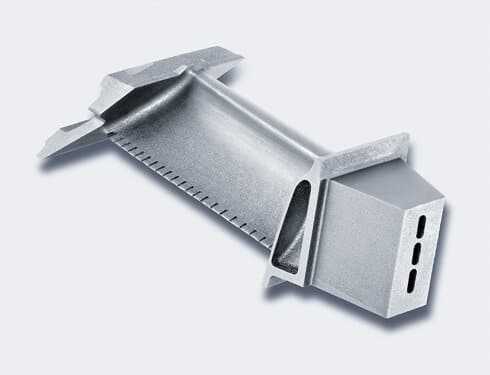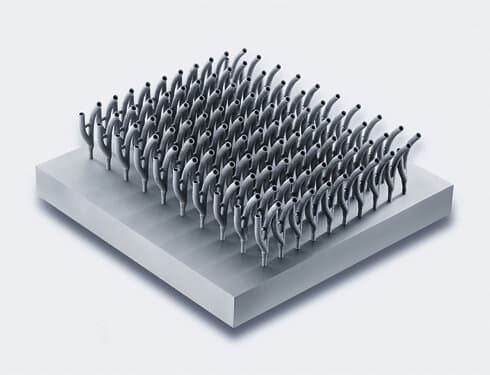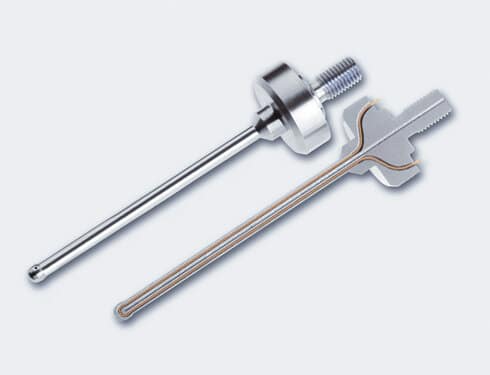Procedure
The LaserCUSING melting process uses a laser beam to create highly complex components directly from 3D CAD data without the need for tools. As shown in the animation below, the finest metal powder is applied in layers by a pusher. These layers are only 0.03-0.05mm high, so that even inclined structures can be optimally modelled. The desired surfaces are then completely melted by a laser and solidify again. The special exposure strategy, which is reminiscent of a chequerboard pattern, keeps the stresses in the material very low.
This process is repeated until the final construction height is reached.
At the end of the construction process, the parts are dug out and mechanically removed from the base plate. Depending on the application, this is done by hand or wire erosion.
Materials & Powder
The powders are not mixtures, but consist exclusively of pulverised original materials. The variety of metals available for additive manufacturing is unfortunately still limited at present. However, new powders are constantly coming onto the market.
BSF Bünter AG currently offers the following materials for 3D printing:
- Stainless steel
- Hot-work tool steel (hardenable)
- Hot-work tool steel (stainless & hardenable)
- Aluminium (low weight)
- Nickel-based alloy (temperature-resistant)
- Invar (very low expansion coefficient)
- Titanium (low weight combined with high strength)
Properties
The mechanical properties of the components produced depend crucially on the residual porosity. With LaserCUSING, however, this is very low at less than one per cent. This means that the density, yield strength and modulus of elasticity are over 99% compared to the original material.
At the same time, the mechanical properties mean that post-processing, heat treatment and surface treatment are also possible, just like with the original material.
The accuracy of 3D printing is in the tenths of a millimetre range, so more precise tolerances must be reworked as with a cast part. The surface is also similar to that of a cast part and must be reworked for smaller roughnesses.
Thin wall thicknesses of up to 0.2 mm and small bores with diameters of up to 0.5 mm can be produced tightly.
Structures catalogue
Additive manufacturing can be used to produce very light yet stable parts. This is now common knowledge. But redesigning is not only worthwhile for lightweight applications: The more unnecessary material can be saved, the faster the component is melted and the more favourable the unit price.
Unfortunately, the design changes are very time-consuming without routine and suitable software.
Benefit from the partnership between BSF Bünter AG and BioStruct GmbH. Simply send 3D data with the desired structure code from the images below (e.g. 2B), wait for an offer and utilise the full potential of additive manufacturing at the best price!

Hybrid design
As selective laser melting processes are relatively slow, it makes economic sense to use the hybrid construction method. Here, a "simple to manufacture" basic body is produced conventionally by machining and only the complex section of the part is additively melted. This technique is often used in mould making for injection moulds in order to reduce manufacturing costs. As can be seen in the example below conformal cooling often only necessary in the upper section of the mould.
The prerequisite for this method is that the base body has a flat surface as a boundary. This surface is ground flat in advance.


Areas of application & industries
In principle, LaserCUSING can generate benefits in any industry. From automotive and mould making to general mechanical engineering and the optics industry.
If you want one or more of the following additional benefits for an application in your company, this could be a case for additive manufacturing.
Mould making: Close contour cooling can be accommodated in injection moulds. The additional benefit here is significantly less warpage with 30-50% shorter cycle times.
Function integrationSeveral parts, for example for a welded housing or a spring-loaded assembly, can be connected and produced as 1 component with LaserCUSING. This eliminates assembly and joining work and fewer parts need to be stored in your magazine.
Lightweight constructionIf a component is to have the lowest possible weight, additive manufacturing can save every bit of material that does not fulfil a function. This results in significant weight reductions, which represent a major advantage for fast-moving parts, for example.
Shortening the development timeThe typical prototype application with additive manufacturing is the reduction of development time. Functional components, e.g. for later aluminium die-casting applications, can be ready for installation at your premises within 1 week. This allows you to carry out visual, mechanical and functional tests without having to invest money in a prototype mould and wait 8-10 weeks for the parts.
Customised applicationsA suitable application apart from the above-mentioned directions is of course very possible. Simply contact us and we will clarify whether additive manufacturing is the right solution in this specific case.
